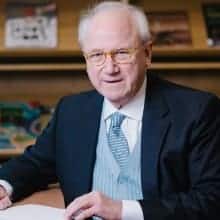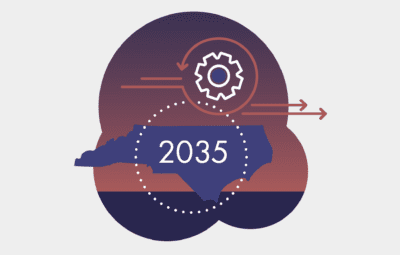
Share this story
- A new proposed North Carolina STEM Plan from @smtcenter advocates for humanities in STEM and rethinking high-stakes testing and school scheduling, writes @FerrelGuillory.
- .@FerrelGuillory says the @smtcenter North Carolina STEM Plan "makes three major contributions to rethinking the conceptual framework of the state’s schools."
|
|
A new proposed North Carolina STEM Plan makes three major contributions to rethinking the conceptual framework of the state’s schools. And it does so by not being narrowly focused on STEM. It’s more ambitious.
“As a leading state in the United States, North Carolina has the educational wherewithal to prepare more of its young people to solve real-world issues and some of society’s grand challenges,” says the report issued by the North Carolina Science, Mathematics, and Technology Education Center (SMT Center).
The SMT Center, a nonprofit founded 20 years ago, is housed at the Burroughs Wellcome Fund in Research Triangle Park. Its CEO is Dr. Samuel H. Houston Jr., a former teacher, principal, and superintendent, who has also led organizations dealing with school leadership and standards.
(Disclosure: I had a role in producing the STEM report. Houston, who has served on the EducationNC board, asked me to critique an early draft and subsequently commissioned me to revise and extend the text. This column offers my view of its key elements.)
First, bring on the humanities. STEM education now is not only an immersion in science, technology, engineering, and math, but also into history, literature, sociology, political science, economics, anthropology, and philosophy.
Of course, the SMT Center uses economic data to show the career payoff for students who master STEM subjects. Increasingly, it goes on to say, employers consider the humanities vital as “critical ethical questions’’ emerge regarding genome engineering, artificial intelligence, social media, and cultural tensions.
“Research and study in the humanities train students to scrutinize and to deepen their understanding of a technology-infused world,” says the report. “Humanities empower them to make moral and ethical judgments — and to understand the implications for their families, local communities, and the wider world. Experiences that integrate STEM and humanities prepare young people for the duties of innovation, self-determination, and democratic citizenship in the 21st century.”
Second, bring down the barriers. Rethink high-stakes testing. Rethink school scheduling.
The SMT Center worries that the current regime of standardized tests pushes teachers to focus their students on memorizing tested facts and performing tested tasks. What’s more, it says, multiple-choice tests do not adequately measure such STEM skills as design, analysis, and evaluation and such life skills as leadership, creativity, and teamwork.
While schools and teachers would remain accountable for achievement goals, says the report, “Multiple-choice, high-stakes, standardized tests for accountability purposes would be administered in STEM subjects only a few times across a student’s career…These tests would serve as one tool within a more comprehensive and well articulated approach, which would entail assessments that use open-ended questions and tasks, performance-based evaluations, and other measures of learning.”
The plan calls for extended class periods, especially in elementary and middle schools.
“Every class does not need to be 90 minutes, but neither should every class be 50 minutes,” says the report. “Flexible scheduling may not be easy to structure, but school schedules should be structured in ways that promote opportunities to enhance student learning.”
Third, let teachers’ ingenuity loose. Give them more time to learn.
In addition to high-quality professional development, says the plan, “schools would provide the time and structures for teachers to create well-thought-out lessons to assess students, to adjust their plans, and especially to learn from each other.”
The SMT Center proposes that North Carolina make “an overarching commitment…to set up teachers for success’’ in schools structured for “on-going, job-embedded growth in teacher skills.”
By defining their proposals as a “STEM plan for 2035,’’ Sam Houston and his colleagues acknowledge that the thoroughgoing educational transformation they envision will require time to develop and take hold in a state of more than 2,400 pre-K-12 schools in diverse communities from the mountains to the coast. With public will and leadership, the plan’s “big objectives for a big state’’ should not exceed North Carolina’s ambition and reach.
Editor’s note: The Burroughs Wellcome Fund supports the work of EducationNC.



